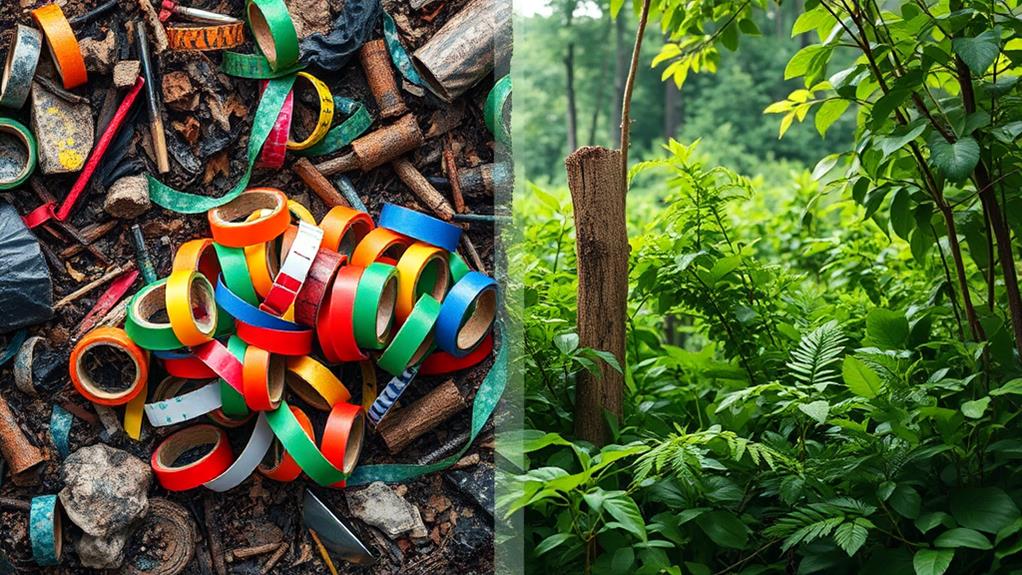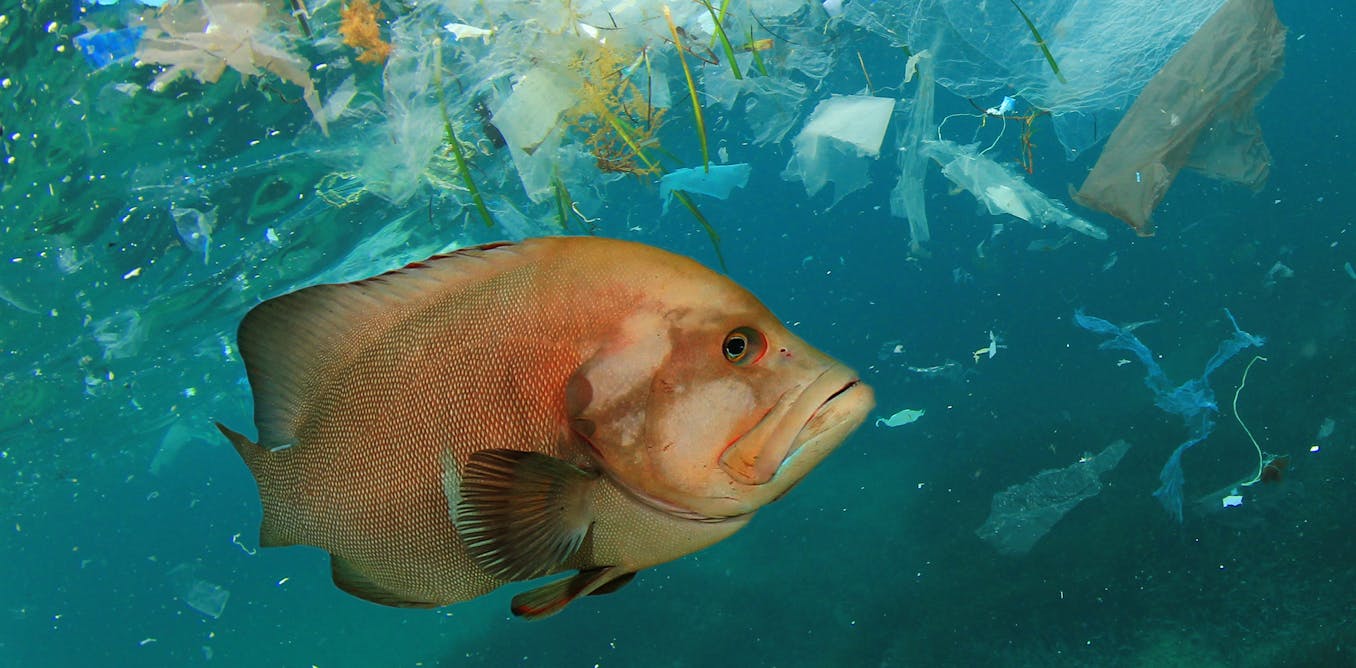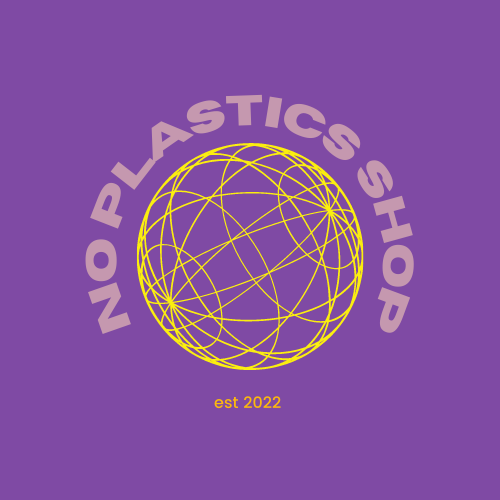Top Environmentally Friendly Tape Options for Sustainable Packaging, Projects, Bandaids, Body Wrapping and Lint Removal
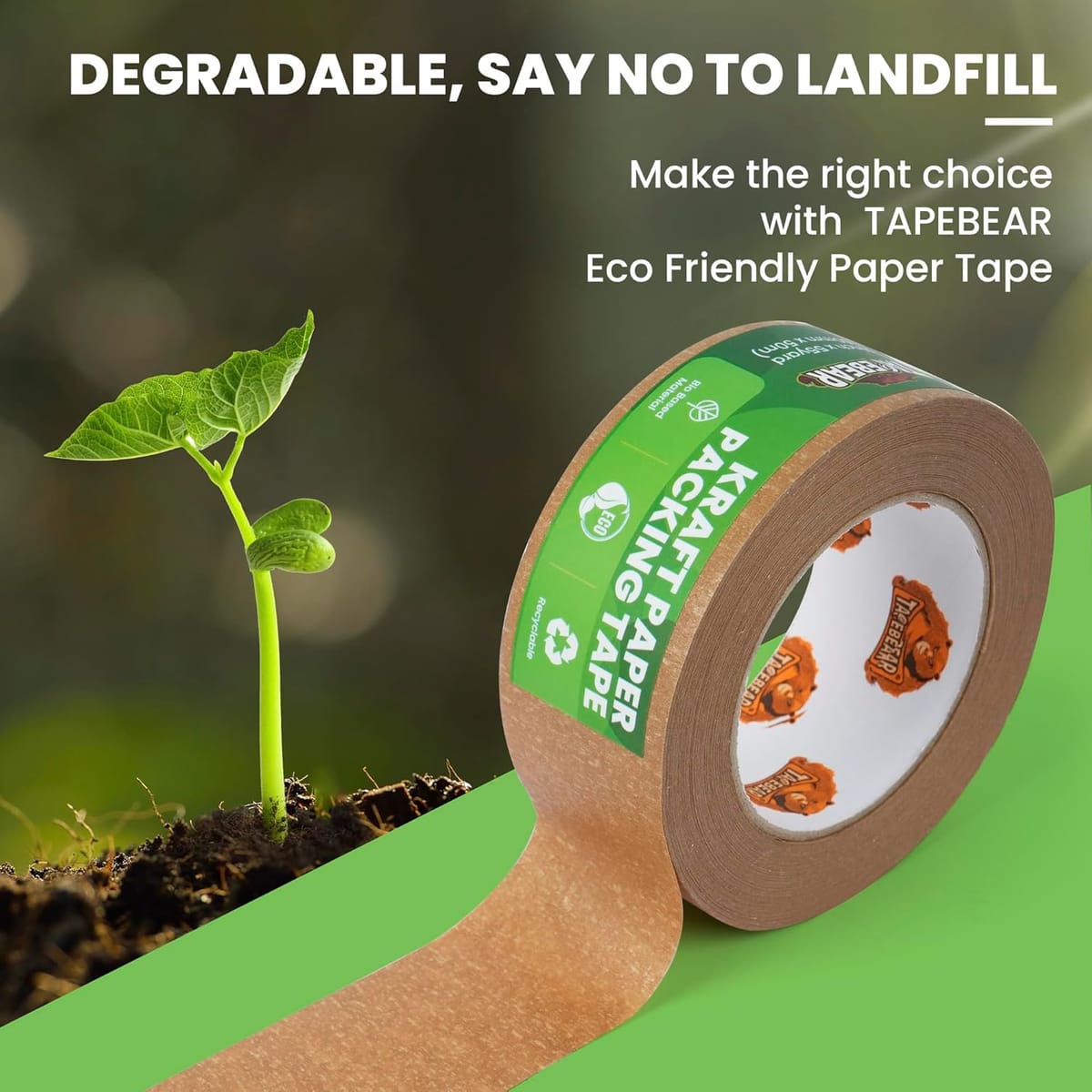
The Best Tapes Currently Available For All Your 2025 Plastic Free Taping Needs
Our Planet will thank you for switching!

Madeful Store Water Activated Tape
Importance of Sustainable Packaging Materials
- We can applaud the companies taking on the crucial task of addressing the environmental impact of plastic pollution produced annually just by conventional tape.
- Most packaging tapes are made from plastic or synthetic materials that are not recyclable, biodegradable, or compostable. The plastic based tapes we're all used to are hardly environmentally friendly.
- Eco-friendly tape alternatives, such as cello tape and water-activated tape, help reduce plastic waste in packaging. Many of these eco-friendly tapes are also curbside recyclable, making them easy to dispose of responsibly.
- Because the most egregious source of accumulating plastic packaging waste begins with the tape that binds them, it's all our responsibility to make more sustainable choices.
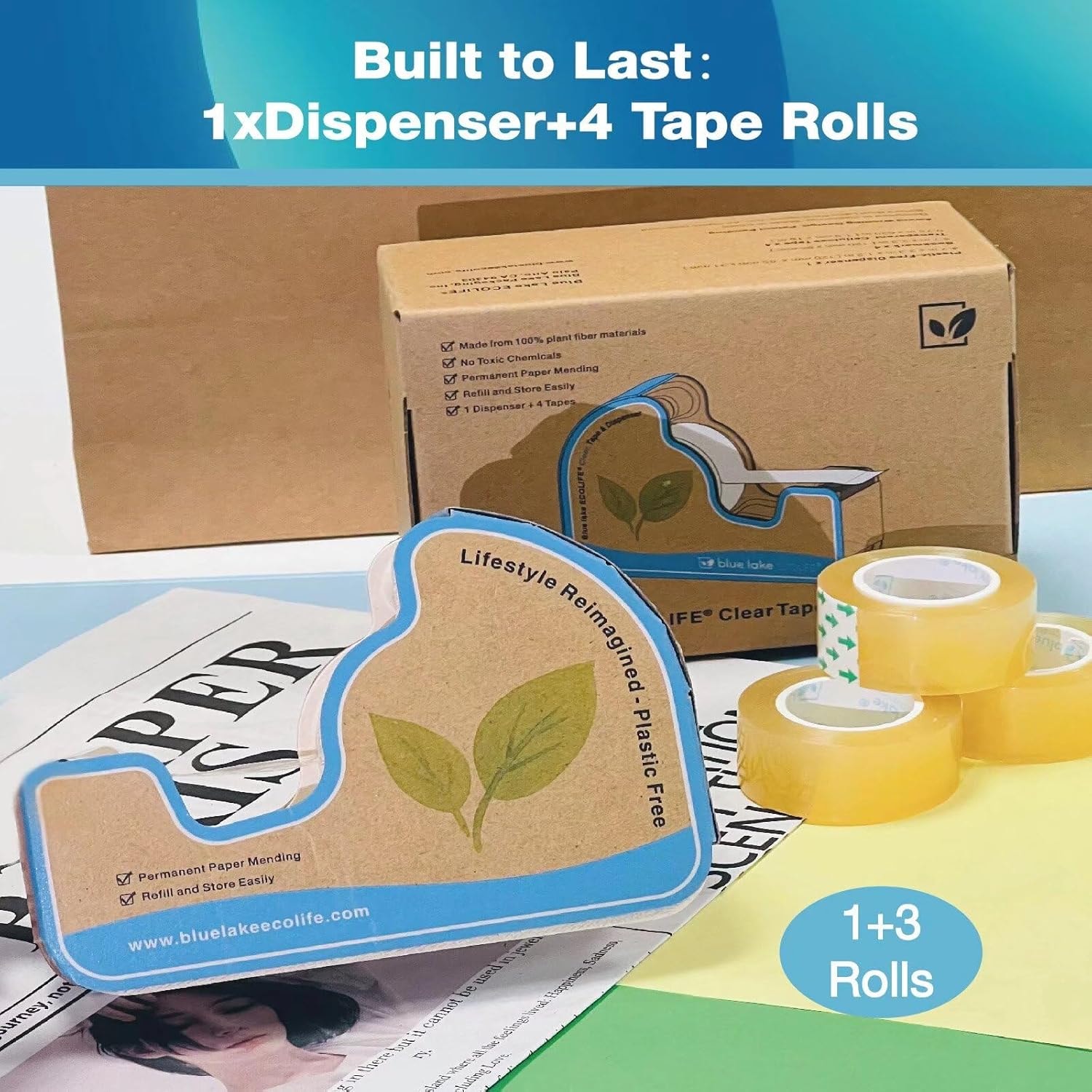
Blue Lake Store** Entirely Plastic Free Gift Wrapping Tape**
Types of Eco-Friendly Tape
- Paper tape is a popular eco-friendly option, derived from wood pulp or recycled paper. It adheres to surfaces with pressure, making it easy to use without additional adhesives.
- Cello tape is another alternative, made from cellulose, a natural polymer from plants like wood or cotton.
- Biodegradable tape, made from plant-based materials, offers a compostable alternative to traditional plastic tape. The best eco-friendly tapes use plant-based glue as their adhesive.
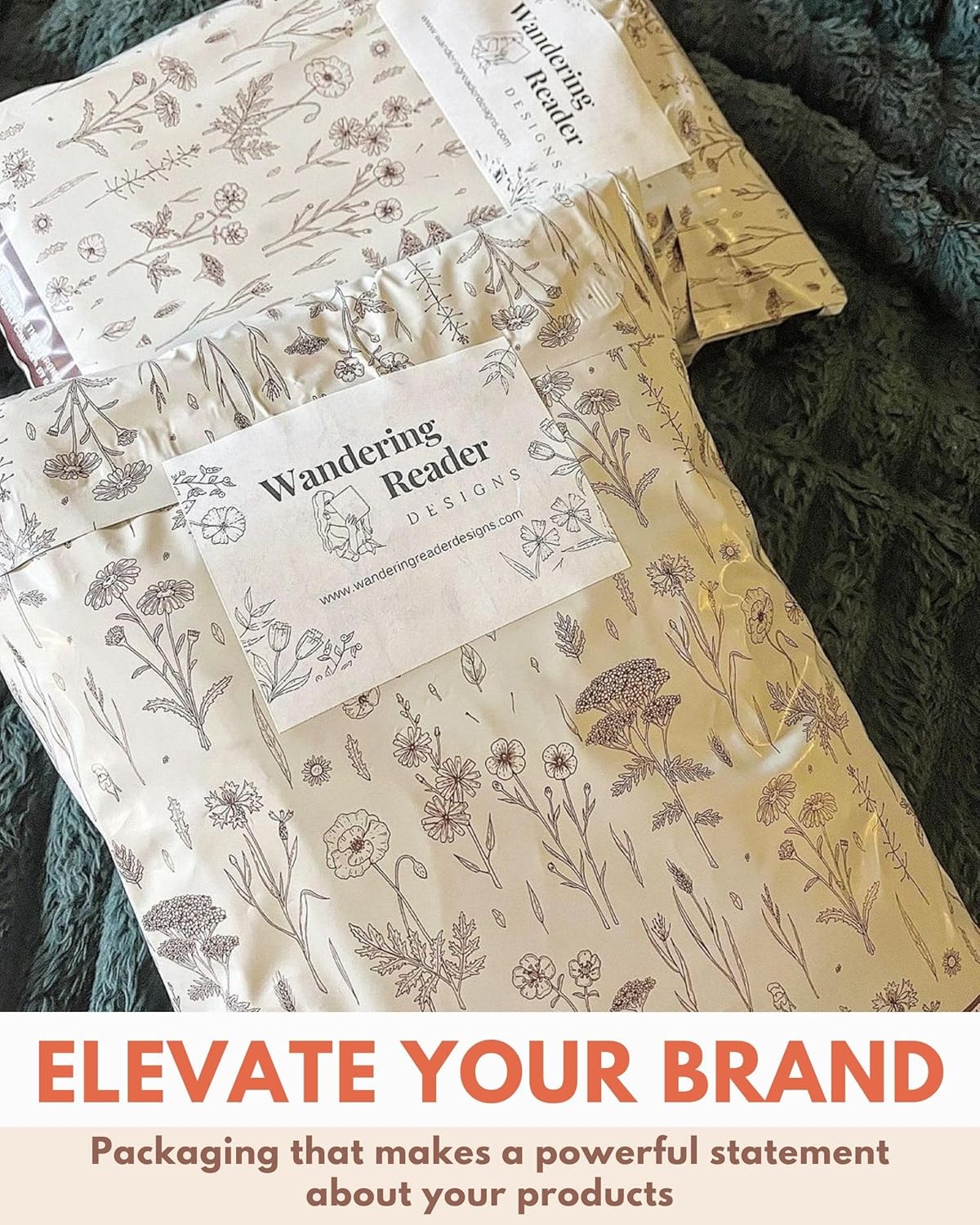
The Impact Store Makes Better Biodegradable Mailers!
- Water-activated tape, also known as water activated paper tape, uses starch-based adhesive on paper backing, becoming sticky only when wet.
- Natural adhesives, such as natural rubber, are used in eco-friendly tapes to reduce environmental impact. Common masking tape we are familiar with is the adhesive tape used for various purposes, but this conventional, plastic-based masking tape poses environmental issues due to its non-biodegradable materials.
- Many eco-friendly tapes are reinforced with bioplastic fibers, which enhance strength and durability while maintaining biodegradability and renewable sourcing.
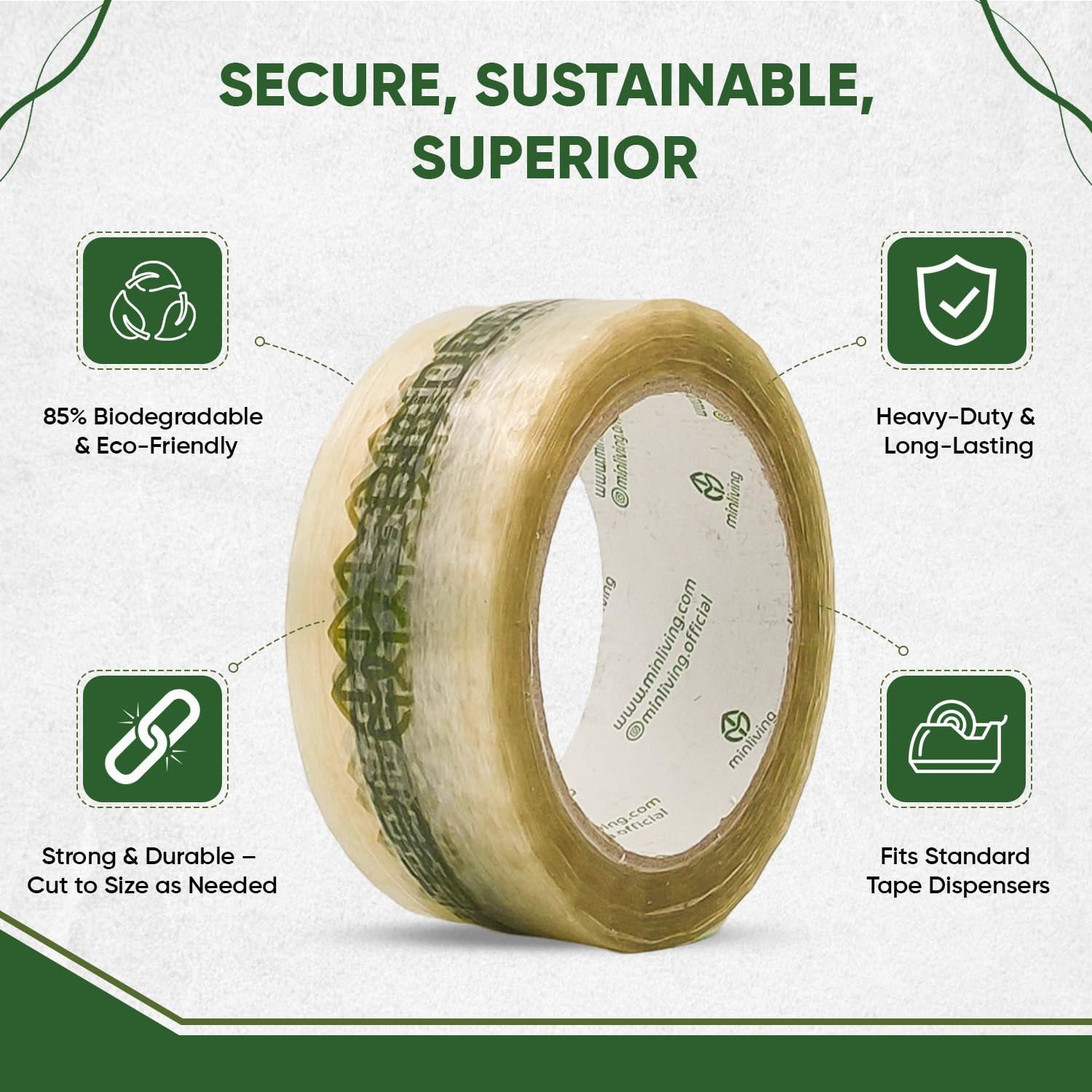
miniliving Store. Biodegradable Cellulose Based Packing Tape
Natural Adhesives
- Natural rubber adhesive is a popular choice for eco-friendly tapes, offering a strong and durable bond. No need for hazardous petrol based binders.
- Plant-based adhesives, such as those made from cotton or wood pulp, are also used in biodegradable tapes.
- These adhesives are also resistant to extreme weather conditions, ensuring a strong seal.
- And don't forget all that plastic lint tape we can now do away with!
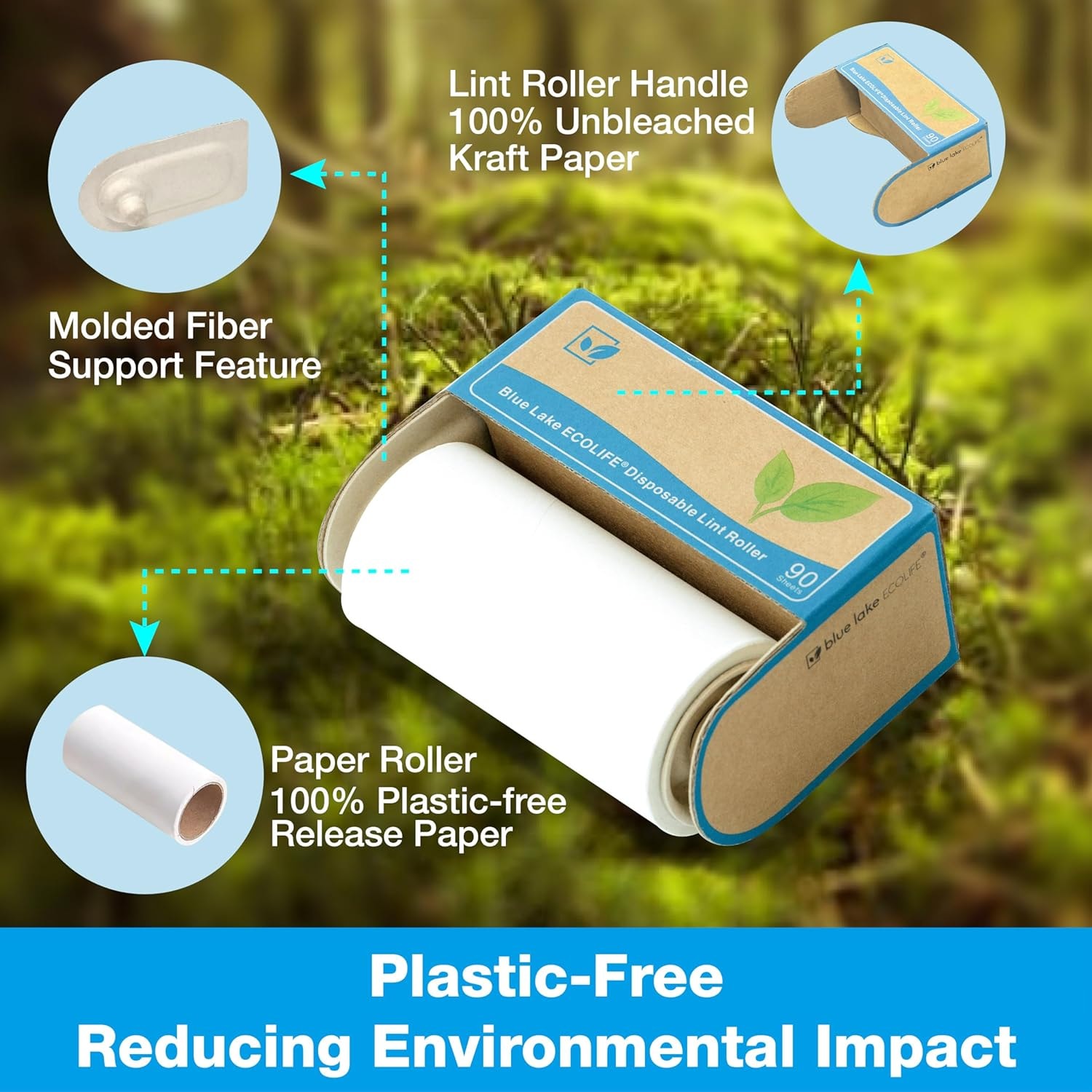
Blue Lake EcoLife Plastic Free Lint Roller
Benefits of Using Eco-Friendly Tapes
Switching to eco-friendly tapes brings a host of advantages for both individuals and businesses aiming to reduce overall environmental impact. Choosing paper tape, cello tape, or other compostable tapes helps combat our mounting plastic pollution problem and supports a more sustainable future. Crafted from renewable resources they are both biodegradable and recyclable, or simply compostable, returning to the earth without leaving the dreadful microplastics that are accumulating everyday in our environment. Imagine if future landfills became innocuous piles of harmless, non hazardous waste.
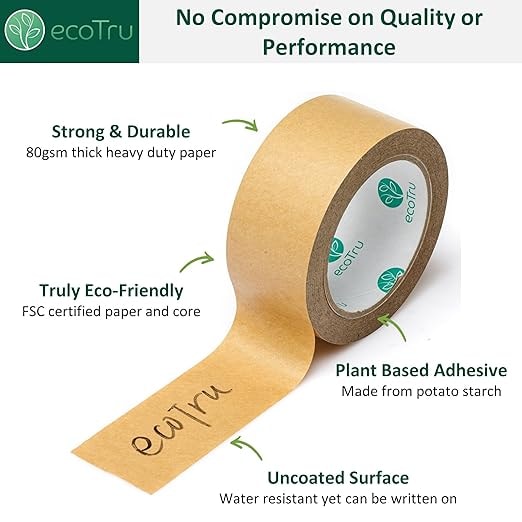
ecotru Tore biodegradable packing tape. extra strong
Another key benefit is the reduction in demand for virgin materials, as many eco-friendly tapes incorporate recycled content. This not only conserves resources but also lowers the overall carbon footprint associated with packaging and sealing, binding, patching or removing lint and dog hair. Whether you’re sealing boxes, packaging products, or the many uses we have for tape, simply looking for a greener alternative for everyday use is a no brainer. You'll find these are superior tapes anyway and won't regret the switch.

STRAP Body Tape because sometimes it's your body that needs packaging. Bamboo Biodegrades, breathes, and naturally hypoallergenic
Compostable Plastic Wrap is another alternative to Thin Plastics like Tape
Alternatives to Traditional Tape
- So biodegradable tapes, made from plant-based materials, are superior, plus compostable alternatives to the traditional plastic tapes we're used to. These eco-friendly tapes are resilient, withstanding the wear and tear of shipping and handling, and stick firmly to surfaces to ensure packages remain secure.
Many eco-friendly tapes are easy to tear by hand, making them user-friendly and preventing damage during unsealing.

BioWall Store Athletic Sports Tape. Zinc Oxide Cotton
Packaging Tape Options
- These tapes offer a strong and durable seal, while minimizing environmental harm.
- The use of recycled materials and natural adhesives reduces waste and supports sustainability.
- Individuals as well as businesses can choose from a variety of eco-friendly tape options to suit their packaging needs.

ADHES Pursuit of Perfection Tape Store** Strong Adhesive**
Biodegradable Tape and Cello Tape Alternatives
Biodegradable tape and cello tape are quickly becoming the go-to alternatives for those seeking to move away from traditional plastic tapes. Made from natural materials, these tapes are designed to break down in the environment without leaving behind harmful residues, making them a responsible choice for packaging and sealing. Traditional Bandaids have also notoriously contained a great deal of plastic. Today we have better options, the best made from naturally antiseptic bamboo.
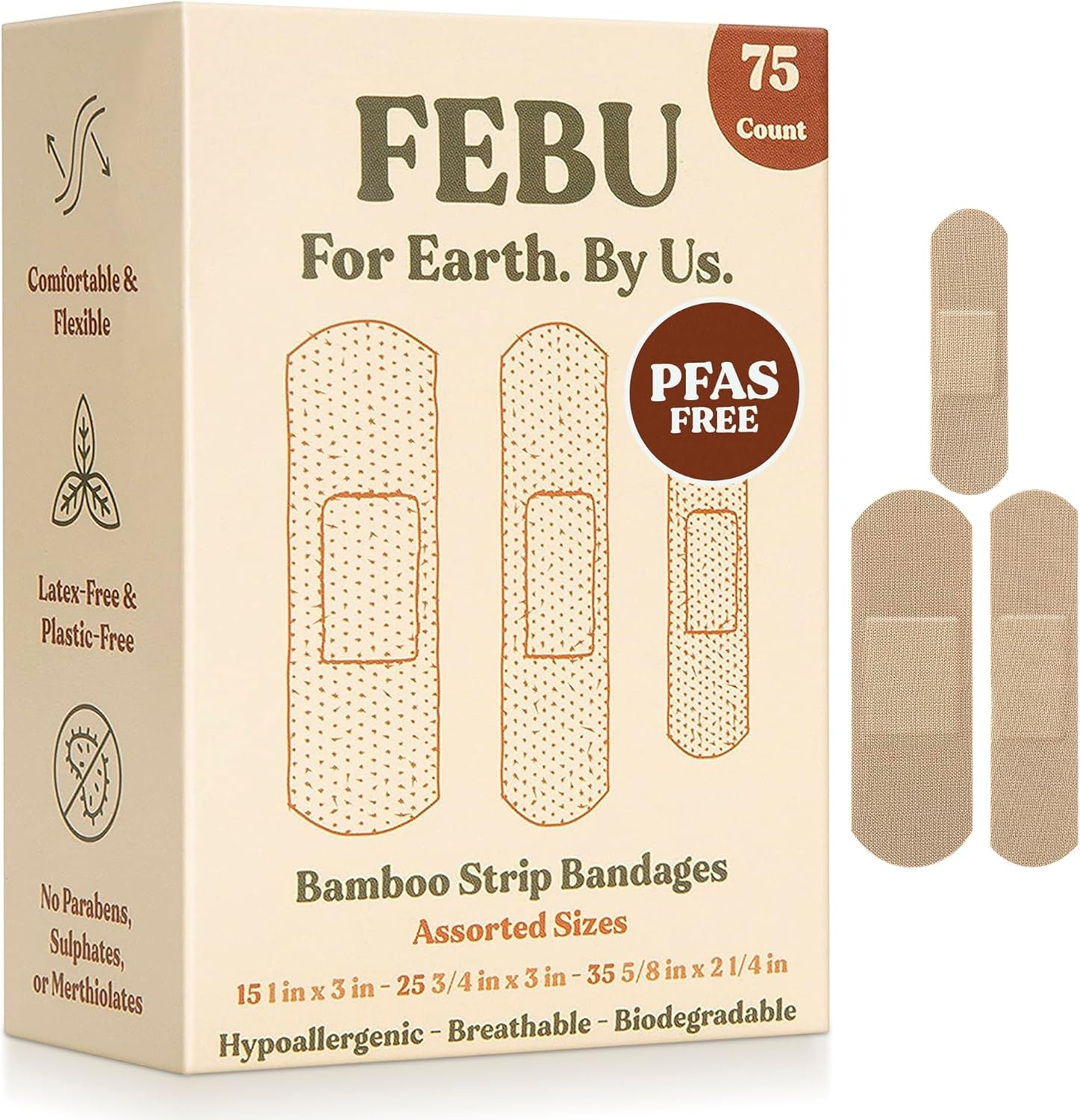
FEBU Naturally Hypoallergenic Bamboo Bandages
Bamboo products, like Cello tape, produced from cellulose derived from plants, is both compostable and biodegradable, while naturally strong adhesives stand up to extreme weather conditions. This makes them suitable for a wide range of applications, from cuts and scapes, sealing packages to general use around the home or office. Biodegradable tapes, bandaids and lint removers provide reliable performance while supporting a healthier environment.

Kraft Paper Tape: A Sustainable Choice
Kraft paper tape stands out as a top choice for those committed to sustainable packaging. Manufactured from kraft paper sourced from surplus wood pulp, this tape is not only eco friendly but also boasts impressive durability and high tensile strength. It’s ideal for sealing boxes and packages, providing a secure hold that resists tearing during transit. Kraft paper tape is also easily removed without leaving sticky residue, making it perfect for situations where tape needs to be repositioned or removed cleanly.
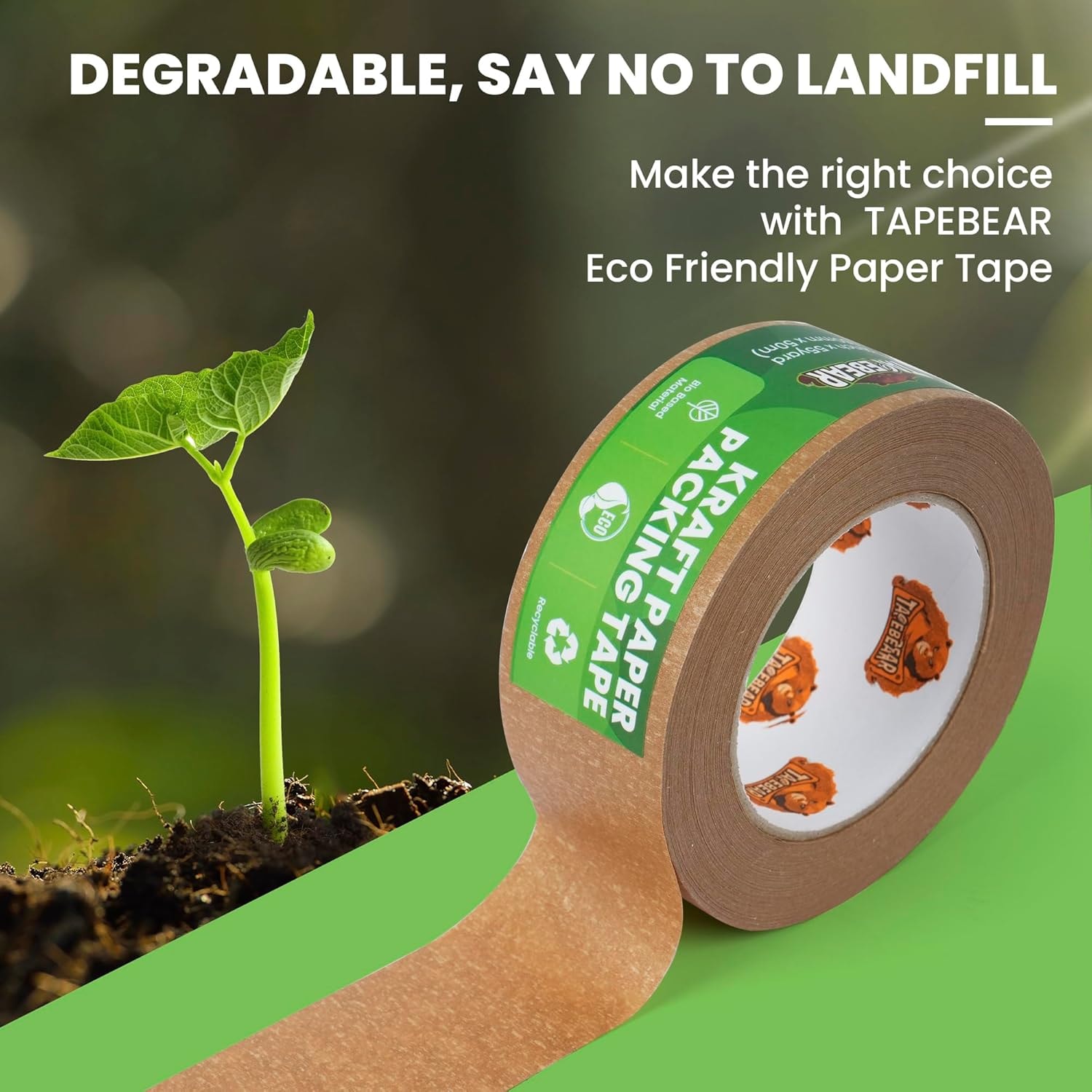
Kraft Eco Friendly Paper Tape. compostable
Many kraft paper tapes are printed with natural inks, further reducing their environmental impact and making them a visually appealing option for brands that want to showcase their commitment to sustainability. Customers looking for an alternative to plastic-based tapes will appreciate kraft paper tape’s compostable and recyclable properties, as well as its ability to deliver reliable performance without compromising on environmental values.

Paperez Biodegradable** Water Activated Packing Tape**
Eco-Friendly Tape Certifications
When selecting eco-friendly tapes, certifications play a crucial role in verifying the product’s environmental credentials. Look for certifications such as the Sustainable Forestry Initiative (SFI) or the Forest Stewardship Council (FSC), which ensure that the materials used in the tape are sourced from responsibly managed forests. Additionally, labels indicating that a tape is compostable or biodegradable provide assurance that the product will break down naturally without harming the environment.
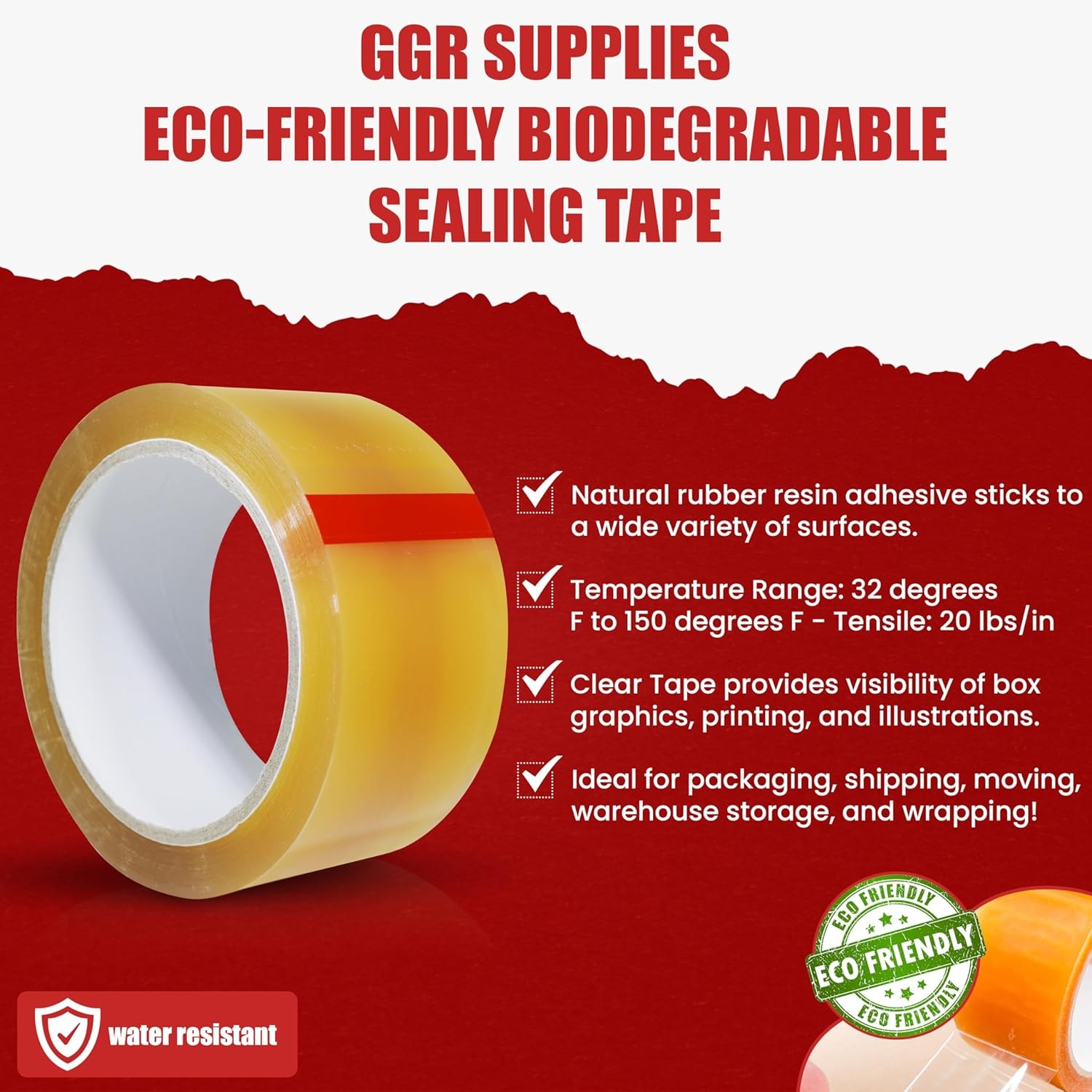
GGR Supplies T. R. U Cello Tape. compostable
These certifications not only help consumers and businesses make informed choices but also enhance the image of brands committed to sustainability. By choosing tapes with recognized eco-friendly certifications, you demonstrate a genuine commitment to environmental responsibility, which can resonate with eco-conscious customers and set your business apart in a competitive market.
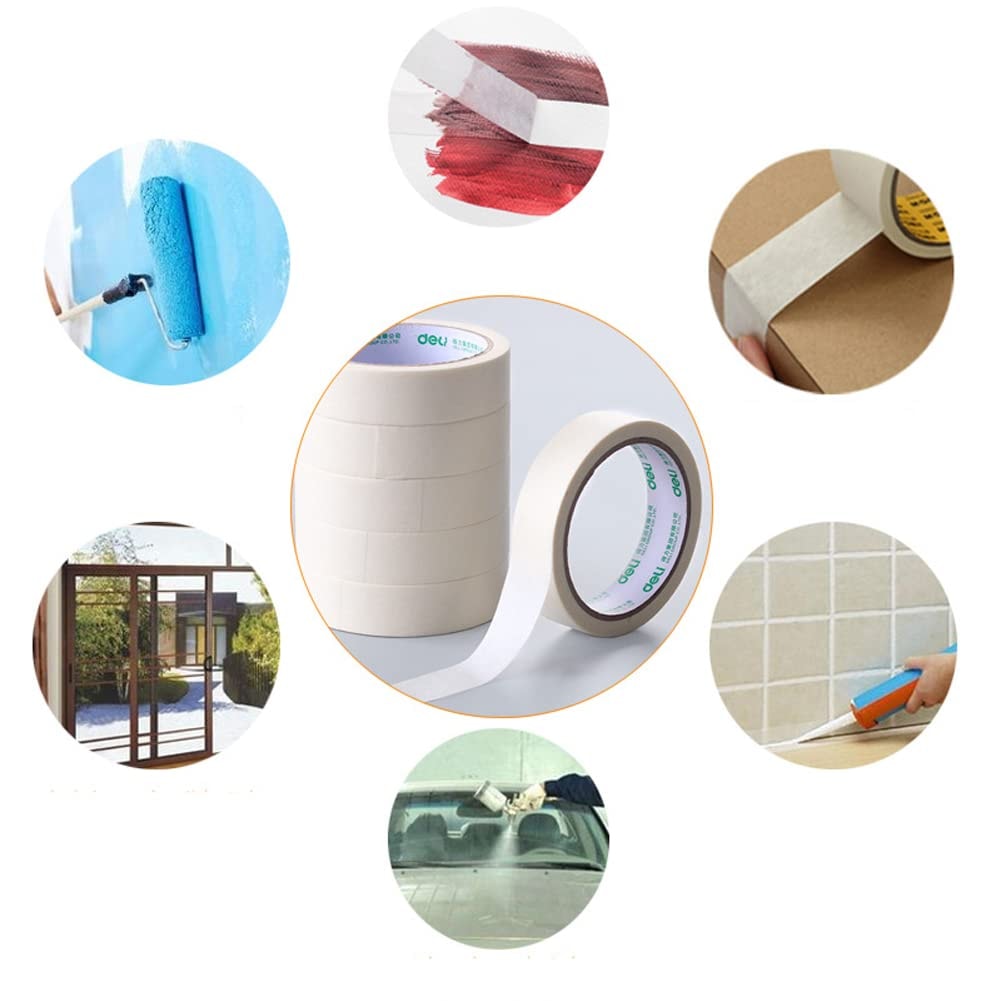
esowemsn naturalrubber masking tape natural rubber is can provide a stronger seal, natural sticky glue adhere's easily to multiple surfaces, construction projects or furniture, naturally water resistant
Where to Buy Eco-Friendly Tapes
Finding eco-friendly tapes is easier than ever, with a wide selection available from both online and brick-and-mortar suppliers. Online marketplaces like Amazon offer a variety of options, including paper tape, cello tape, biodegradable tape, and kraft paper tape, making it simple to compare products and find the best fit for your needs. Many specialty packaging stores and office supply retailers also stock eco friendly tape alternatives, catering to both individual and business customers.
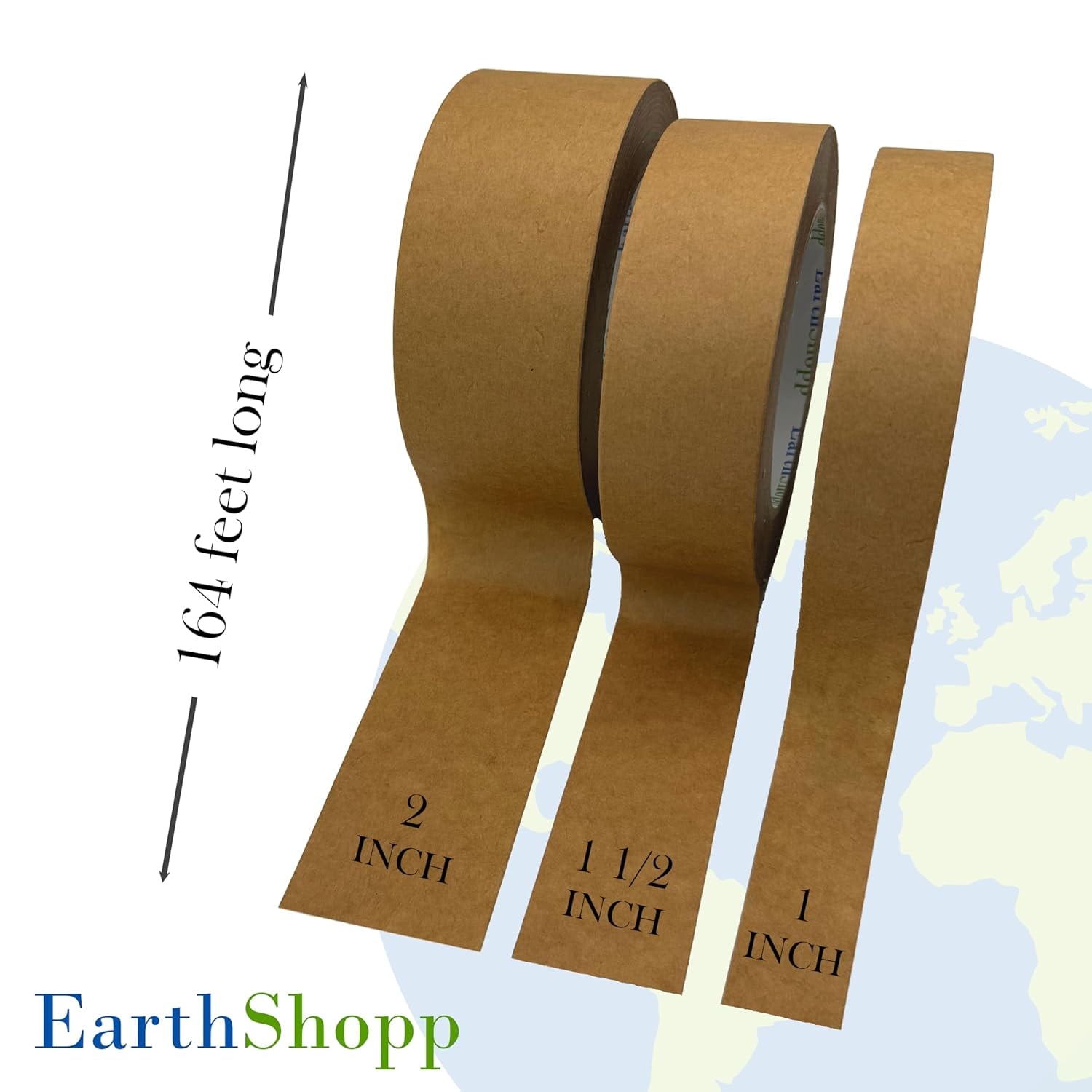
EarthShop Plastic Free Tape Writable, Biodegradable Packing Tape
For businesses, purchasing eco-friendly tapes in bulk can help manage costs while supporting sustainability initiatives. When shopping, pay attention to the tape’s material composition, recyclability, and biodegradability to ensure it aligns with your environmental goals. By choosing eco-friendly tapes, you not only help reduce plastic pollution but also contribute to a more sustainable future for packaging and beyond.
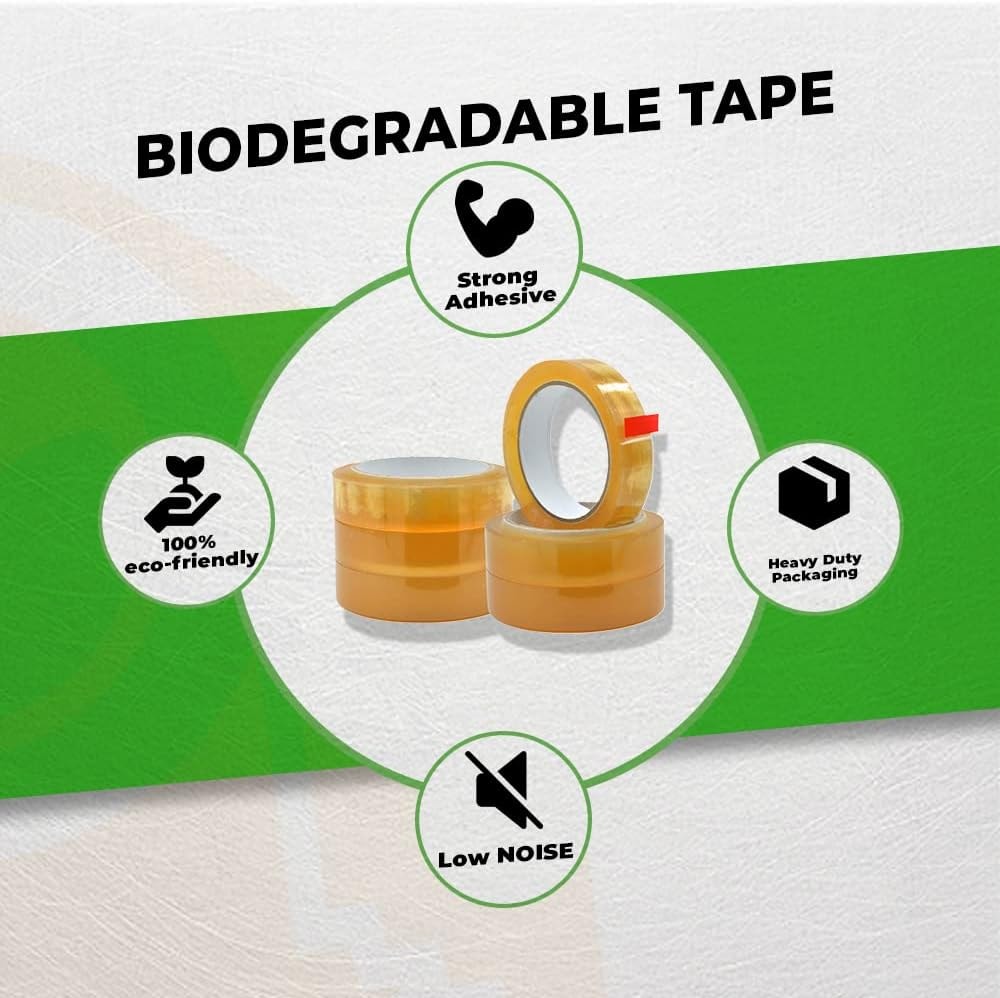
WOD BCST Biodegradable Tape superior packing tape
Eco-Friendly Packaging Solutions
- Eco-friendly packaging solutions, such as biodegradable tape and paper tape, reduce plastic pollution and environmental impact.
- Businesses can make the switch to sustainable packaging materials, including eco-friendly packaging tape.
- The use of natural adhesives and recycled materials supports sustainability and minimizes waste.
- Eco-friendly tapes are suitable for packaging, labeling, and masking applications.
- These solutions offer a strong and durable seal, while reducing environmental harm.

The Farming Artist. Earth Friendly Printed Packing Tape
Making the Switch
- It's critical all we customers make the switch to compostable body tape, lint removal tape and packaging materials. All biodegradable tape, paper based tape or natural rubber tape currently available. This will drive further demand in a consumer industry ripe for change.
- The use of natural adhesives and recycled materials reduces waste and supports sustainability.
- Eco-friendly tapes offer a strong and durable seal, while minimizing environmental impact.
- Customers can choose from a variety of eco-friendly tape options to suit their packaging needs.
- Making the switch to eco-friendly packaging solutions will reduce plastic pollution and support sustainability.
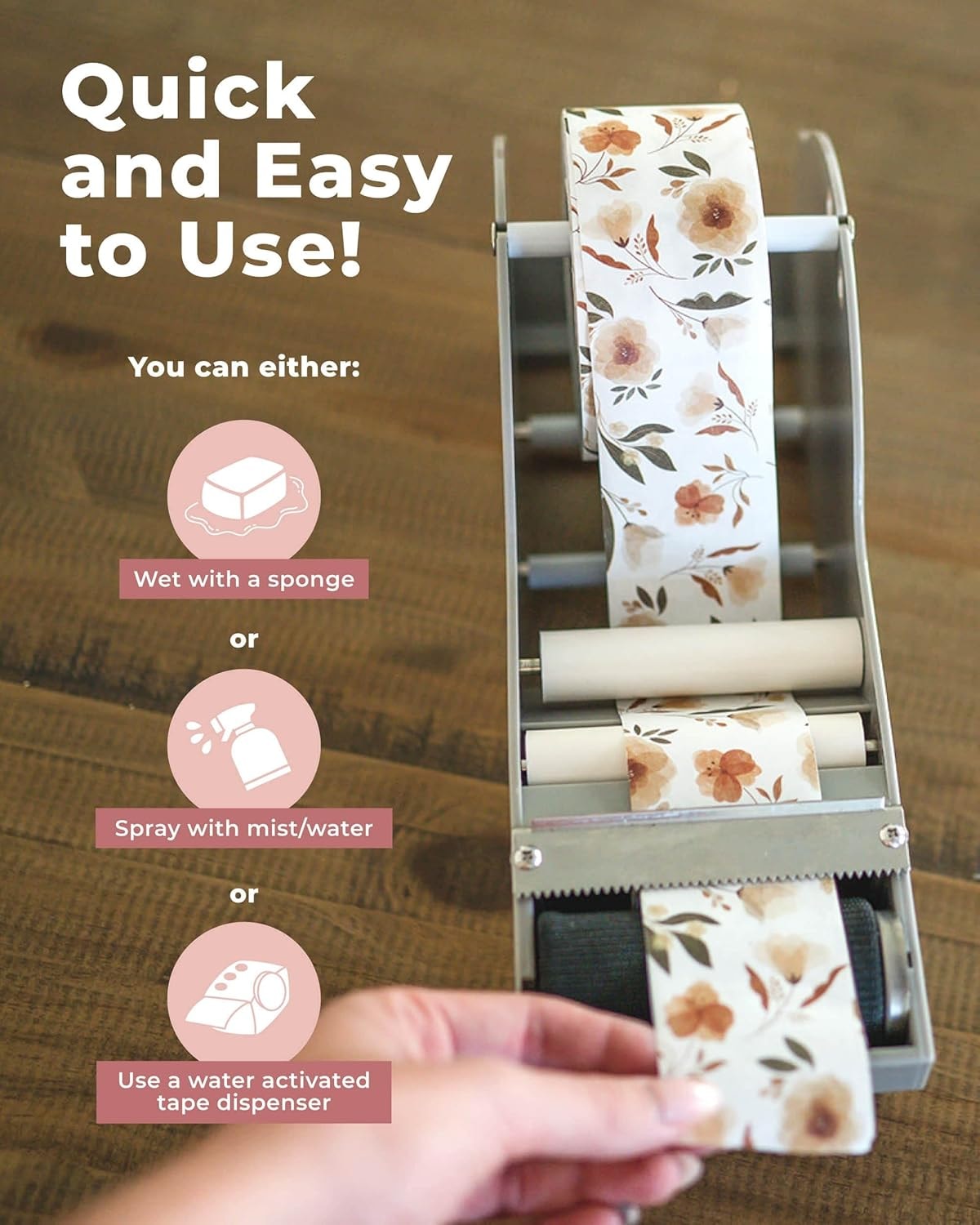
Impact Store Biodegradable Packing Tape. Water Activated Printed Compostable
Challenges and Limitations
- In short, there are none. The argument generally made is that eco-friendly tapes come at a higher cost compared to traditional plastic tape. But increasingly we're finding the price comparable.
- The benefits of reducing plastic pollution and increasing microplastic load on the planet by far outweighs the competitive costs.
- The use of natural adhesives and recycled materials reduces waste and supports sustainability.
- Eco-friendly tapes are suitable for packaging, labeling, and masking applications, offering a strong and durable seal.
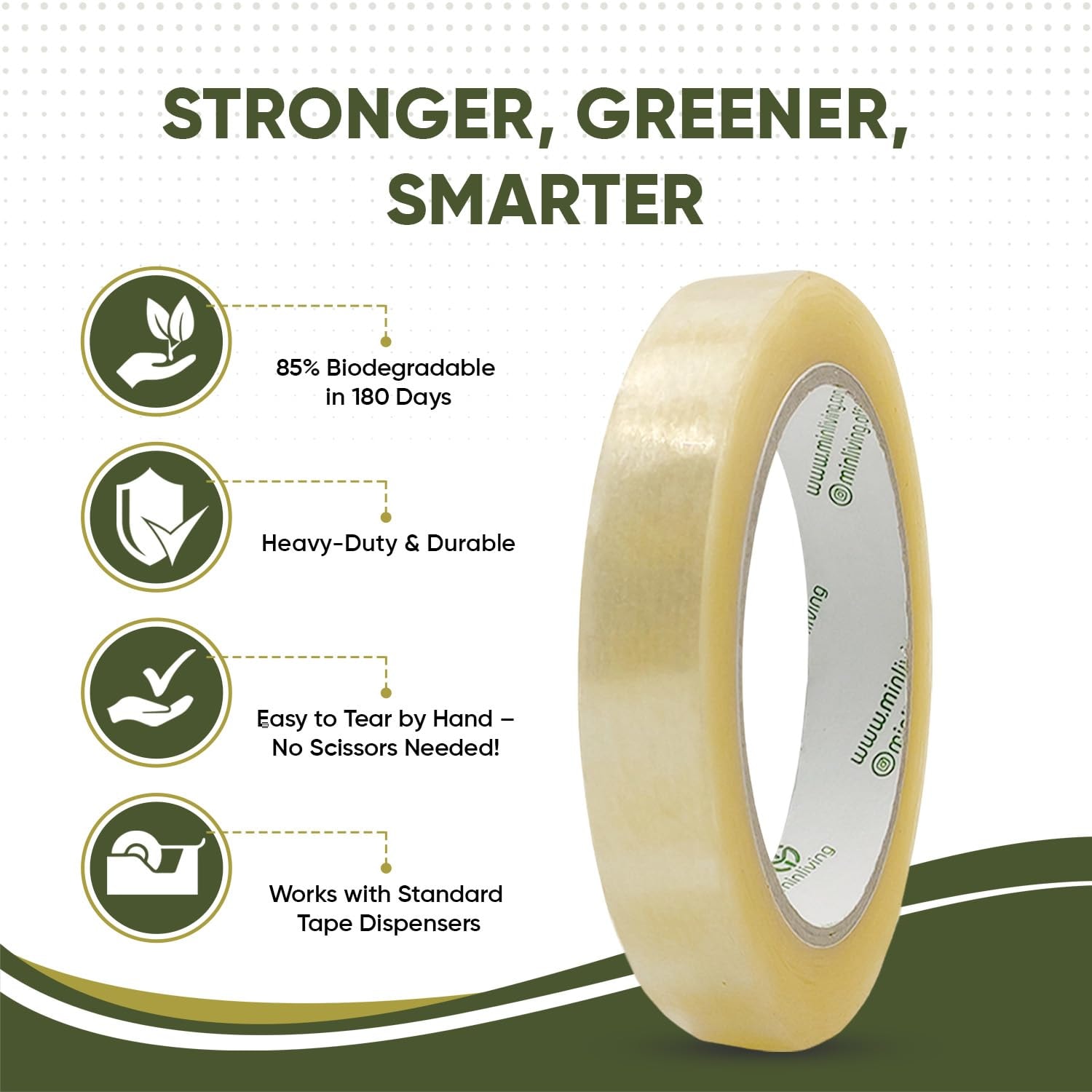
miniliving Store biodegradable heavy duty packing tape
Overcoming Challenges
- Don't believe the naysayers, claiming higher cost or diminishing the importance of little things like tape on the environment. It's all these little things that add up to make the big difference in our currently very toxic plastic world.
- The use of natural adhesives also will reduces plastic waste, since they're not petrol based. By supporting sustainability we are eliminating microplastics. It takes all of our participation.
- Eco-friendly tapes offer a strong and durable seal, while minimizing environmental impact.
- Make the switch to plastic free body tapes, lint tapes and packaging materials, including biodegradable tape and paper tape and you'll never go back to old plastic versions again.
- Together we can overcome our plastic pollution problem. Purchase from brands working for our sustainable future. All it takes is a concerted global consumer effort.

FAQs
How much does plastic packing tape contribute to environmental pollution? Are there any statistics?
In 2016, the European Union reported 16 million tons of plastic packaging waste, with plastics constituting 60–80% of global waste, though specific figures for packing tape alone are not isolated. Globally, 8 million tons of plastic waste, including packaging materials like tape, enter oceans annually, threatening marine life and ecosystems
What is the production impact of plastic tapes?
Plastic tape production relies on fossil fuels (e.g., crude oil, natural gas), contributing to greenhouse gas emissions. Plastic manufacturing is energy-intensive, emitting carbon dioxide and other pollutants. Traditional solvent-based adhesives in plastic tapes release volatile organic compounds (VOCs), impacting air quality and human health.
Why can't we just burn plastic waste like used tape?
Incineration of plastic tape releases toxic pollutants, further contributing to air pollution. About 91% of plastic packaging waste, including tape, ends up in landfills or the environment due to poor waste management.
What is plastic tape primarily made of?
Plastic tape is primarily made from non-biodegradable materials like polypropylene or PVC, Its environmental impact stems from its persistence, low recyclability, and production processes. The short lifespan of plastic packaging, including tape, makes it a major contributor to plastic pollution.
What will happen to our planet if we don't find a way to deal with plastic pollution?
By 2100, unchecked plastic pollution could render large swaths of land and ocean uninhabitable, reduce global food and water security, and amplify climate-driven disasters. Human societies would face escalating health crises, economic instability, and mass displacement, particularly in vulnerable regions. The planet would remain habitable but degraded, with diminished biodiversity and quality of life, potentially resembling a “plastic age” in the geological record.
For more information:
